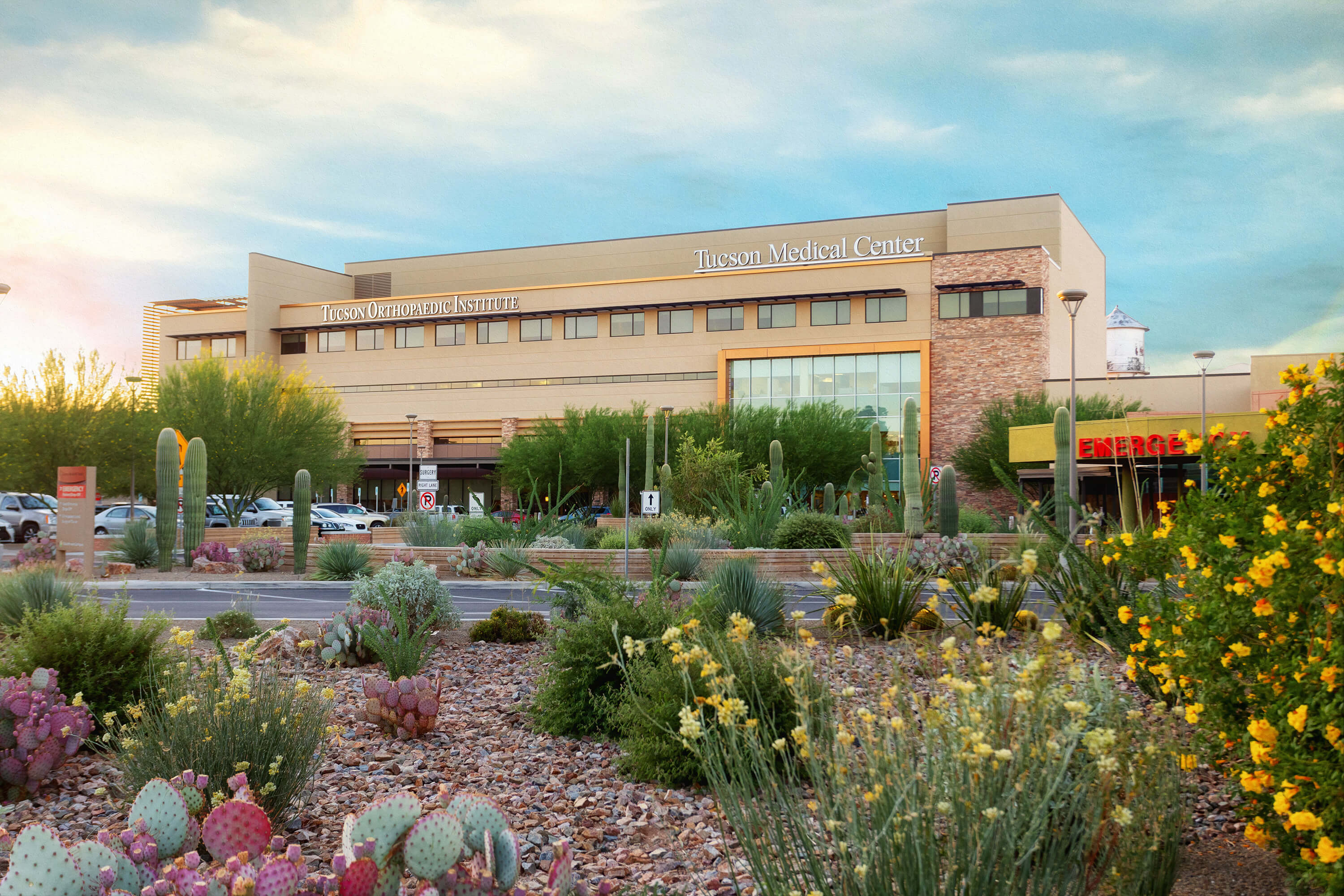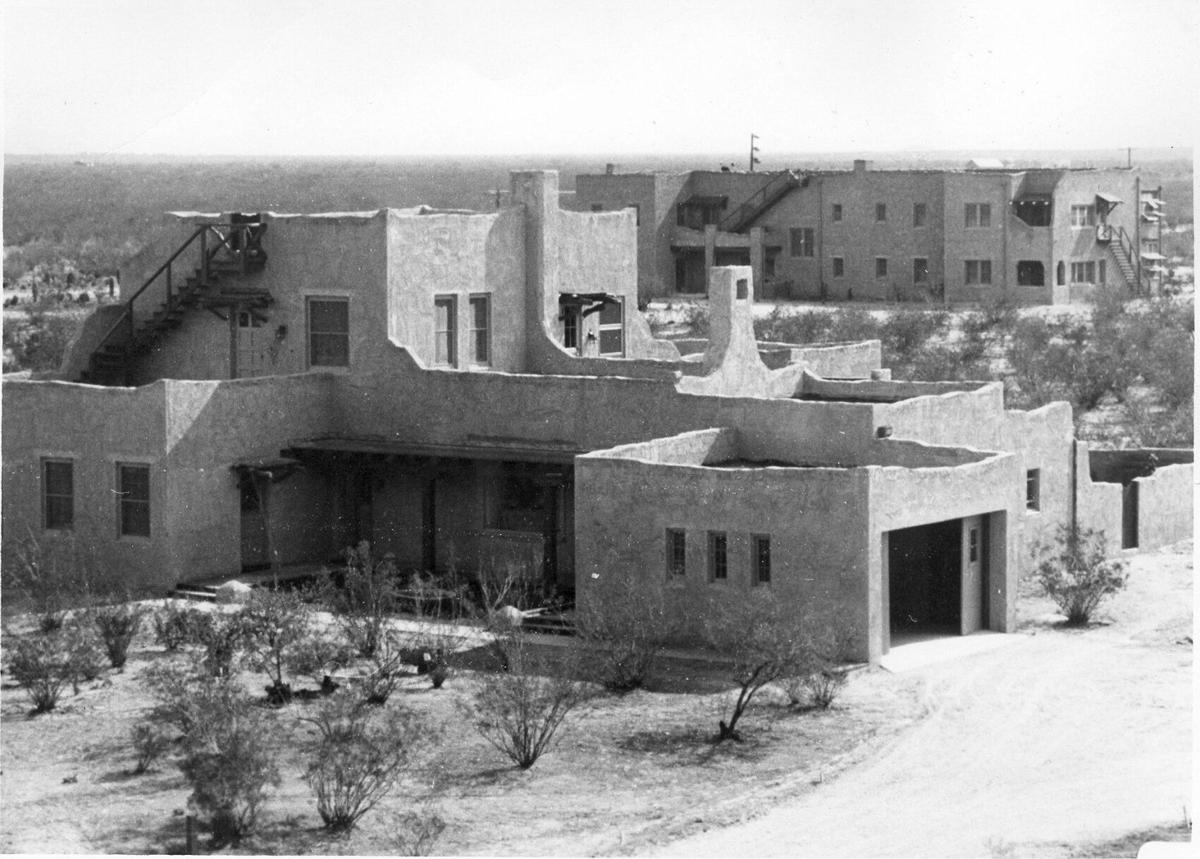About TMC
TMC puts you first.
Tucson Medical Center, licensed at more than 600 beds, has been Tucson’s locally governed nonprofit regional hospital since admitting its first patient Nov. 9, 1944. TMC is Southern Arizona’s leading provider for emergency care and pediatric care (including Tucson’s first Pediatric Emergency Department), with intensive care units for adults, children and newborns. Other specialty areas include women’s, maternity, cardiac care, orthopaedic, neuroscience, hospice, surgical and vascular care.
We earned The Joint Commission's Gold Seal for Hospital Accreditation by demonstrating continuous compliance with the commission's performance standards. Key collaborations include our alignment with Abacus Health, a Southern Arizona accountable care organization; membership in the Mayo Clinic Care Network; and partnership in the Southern Arizona Hospital Alliance. Additionally, TMC Health has a joint venture with El Rio Health in creating the innovative, integrated health centers HealthOn Broadway and HealthOn University.
TMC is also committed to empowering patients to be active partners in their care and has a robust wellness outreach program, including at TMC for Seniors at the Palo Verde Campus.
Southern Arizona's locally governed nonprofit health system, TMC Health, is the corporate entity that includes Tucson Medical Center; TMC Rincon, TMCOne primary and specialty care practices; Benson Hospital, Northern Cochise Community Hospital and their affiliates.


The Erickson home (pictured above) is still used for offices at TMC today
Our History
Serving the Southern Arizona for over 80 years.
Tucson Medical Center has been providing continuous service to Southern Arizona from the day it admitted its first patient on Nov. 9, 1944. In the passing years, through good times and bad, TMC has never stopped delivering on its mission to provide exceptional health care with compassion.
TMC’s roots extend back to the 1920s, when the internationally known Desert Sanatorium began operating as a tuberculosis treatment center and health retreat. Some of the original buildings from the Desert Sanatorium remain in service today, as a testament to the long history of health care delivered on this site. The desert landscaping and sun-drenched patios of today are part of the heritage established by the Desert Sanatorium.
The original vision for the Desert San came from Dr. Bernard Wyatt, who saw the health benefits of a dry, sunny climate. Through time, ownership of the institution transferred to financial backers Alfred and Anna Erickson of New York.
Anna Erickson usually divided her time between New York City and Tucson, especially after her husband’s death. After struggling through the Great Depression and a loss of clientele, followed by the arrival of World War II and a shortage of nurses, it was becoming apparent that the Desert San's days were numbered.
Tablets summarizing TMC’s history are installed at Founder’s Park, a shady retreat near the Beverly Avenue entrance to the TMC campus. Here is the way the hospital’s origin is described in the TMC history plaque, prepared in part by TMC history buff and retiree Jerry Freund:
By 1943, the world was at war. Everything around Tucson and the Desert Sanatorium changed dramatically. Tucson found itself stripped of many of its resources – namely, housing and hospital beds. The Desert Sanatorium leadership feared there would be no research money, no world-renowned physicians, and no paying guests. Anna Erickson foresaw troubling times ahead and decided to close the Desert Sanatorium for the summer of ’43 – and maybe forever.
Out of the chaos of the times came the strength of the Tucson community. Organizations such as St. Philip’s Episcopal Church, the American Red Cross and the Pima County Medical Society rose to the occasion to see what could be done, and to take necessary action. Anna Erickson, seeing the community response, declared that if certain goals could be met, she would donate the Desert Sanatorium to the community. Committees were formed and goals established to form a new hospital – a new community hospital open to all physicians and all patients who needed care.
On Nov. 2, 1943, the articles of incorporation were filed, and after a successful community fund drive, Tucson Medical Center was officially established in January 1944. The first patient was admitted Nov. 9, 1944. The life of this hospital is tied to the life of the community, the founders, the benefactors, the physicians, the employees, and those dynamic individuals who had the courage to shape and reshape the vision we share today as Tucson Medical Center.
It was something of a Christmas miracle that TMC was created in late 1943. One man who helped make the dream come true was Roy P. Drachman, a well-connected realtor and visionary. His memoir (called “This Is Not A Book: Just Memories”) includes his first-hand recollection of how TMC came to be:
It was learned that Mrs. Erickson, owner of the Desert Sanatorium on Grant Road, under certain circumstances, might make a gift of the institution to the community. The group encouraged Rev. Ferguson to pursue the matter with Mrs. Erickson.
A short time later we found that she would make the gift providing the money would be raised by Tucsonans to convert the sanatorium into a community hospital to be operated by a board of directors made up of a broad-based membership representing all segments of the area. It was estimated that $250,000 was needed to make the conversion.
After many other meetings, to which more people were invited, the group officially formed itself as the first Board of Directors of the Tucson Medical Center. It was decided to go to the community and ask for contributions to the $250,000 fund. I was appointed chairman of the fundraising committee. The campaign was conducted during December of 1943 and the early part of 1944. (Photo, right, TMC staff in 1946)
One of the most generous contributors was the Rosensteil family who kicked off the drive with a substantial gift. The financial drive was successful in reaching its goal, and the Tucson Medical Center became a reality.
When it opened, no one knew for sure whether the hospital would survive. Since Nov. 9, 1944, Tucson has never had a day without Tucson Medical Center, and there’s no end in sight.